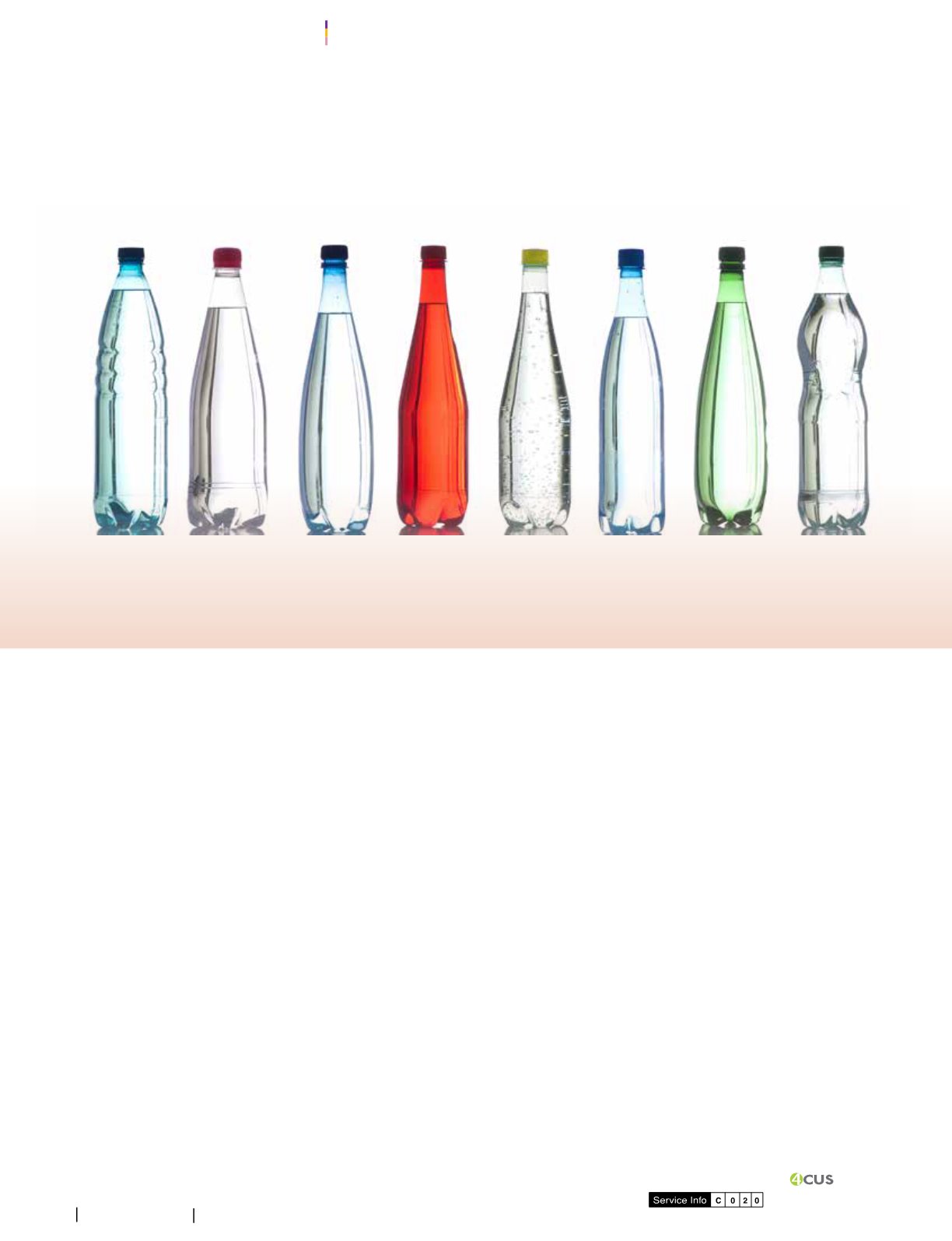
104
SEP 2017
FOOD FOCUSTHAILAND
STRENGTHEN
THE
PACKAGING
Thermal analysis encompasses a group of techniques that are to
measure thephysical propertiesofasubstanceasa functionof timewhile
the substance is subjected to a controlled temperature program. The
techniques include DSC (Differential Scanning Calorimetry), TGA
(Thermogravimetric Analysis), TMA (Thermomechanical Analysis) and
DMA (DynamicMechanical Analysis).
Thermal analysis isemployed in researchanddevelopment, process
optimization, qualitycontrol,material failureanddamageanalysisaswell
as toanalyzecompetitiveproducts.Forexample, the influenceofmoisture
content, additives, plasticizersor fillers, and thecontent of impuritiesand
contaminants can be determined from thermal measurements.
Furthermore, the different methods yield information about the
processing, thermal history and pretreatment (storage and use),
mechanical stress or strain, anddimensional changes.
ThisfirstarticledescribeshowDSC isused toanalyzea thermoplastic,
PET (polyethylene terephthalate), as comprehensively as possible. The
resultsof the variousmethodsare comparedwithoneanother. Themain
topicsdiscussedareGlass transition,Coldcrystallization,Recrystallization,
Melting, andThermal history.
PET
PETwaschosen to represent thegroupof thermoplasticpolymers. It isa
polyester produced in a polycondensation reaction between terephthalic
acidand ethylene glycol. Its structure is shown inFigure1.
PET is used for many different applications. One of the most well-
known is the manufacture of plastic bottles in the beverage industry.
It is also used as a fiber in the sports clothing industry because of its
excellent crease-, tear-andweather-resistance properties and lowwater
absorption
Films of to 500 urns are used for packaging materials, for the
manufacture of furniture, sunshades, and so on. The finished films are
oftencoatedor laminatedwithother filmsandarewidelysued in the food
industry, for example for packaging coffee or other foodstuffs to prevent
the lossofaroma.Thecharacterizationof thepropertiesof thematerial
is therefore very important in order to guarantee constant quality.
Experimental Details
The DSC measurements described in this article were performed
usingaDSCequippedwithansensor
1
andevaluatedwithasoftware
2
.
PET samples weighing about 3 to 10 mg were prepared and
pretreateddependingon theapplication. Ingeneral, samplesshould
have a flat surface and make good contact with the crucible. The
bottomof thecrucibleshouldnotbedeformedby thesamplematerial
when it is sealed.
Measurements andResults
DSC is a technique that measures the heat flow of samples as a
functionof temperatureor time.Themethodallowsphysical transitions
and chemical reactions to bequantitativelymeasured .
Effects of type will be analyzed with the aid of different DSC
measurements.Figure2shows themost importantevents thatoccur
whenPET ismeasuredbyDSC. Theseareoftencharacteristic for a
substance and serve as a fingerprint, enabling them to be used for
quality control.
Figure 2 displays a typical first heatingmeasurement curveof a
PET sample. It shows the glass transition, cold crystallization, and
melting. The glass transition exhibits enthalpy relaxation, which is
shownby theoverlappingendothermicpeak.The latteroccurswhen
the sample has been stored for a long time at a temperature below
theglass transition.Coldcrystallization takesplacewhen thesample
is cooled rapidly and has no time to crystallize during the cooling
phase. The DSC curve can also be used to determine the specific
heatcapacity.Differentstandardproceduresexist for thedetermination
of the glass transition temperature; several of these are evaluated
directly by a software
2
and are shown inFigure 2.
Thermalanalysisofpolymerswith
DifferentialScanningCalorimetry
This is the first of a series of six articles on the thermal analysis of polymers. The aim is to demonstrate and
explain thevariouseffects that canbemeasuredby thermal analysis tocharacterizesamples.Theexperiments
havebeenperformedusing threedifferent typesofplasticmaterials,namelya thermoplastic (PET),a thermoset
(UK600), andanelastomer (WOO1).Thermal analysis iswidelyused in thepolymer, petrochemical, chemical,
pharmaceutical, automotive,microelectronics, food, and cosmetics industriesaswell as in scientific research.


